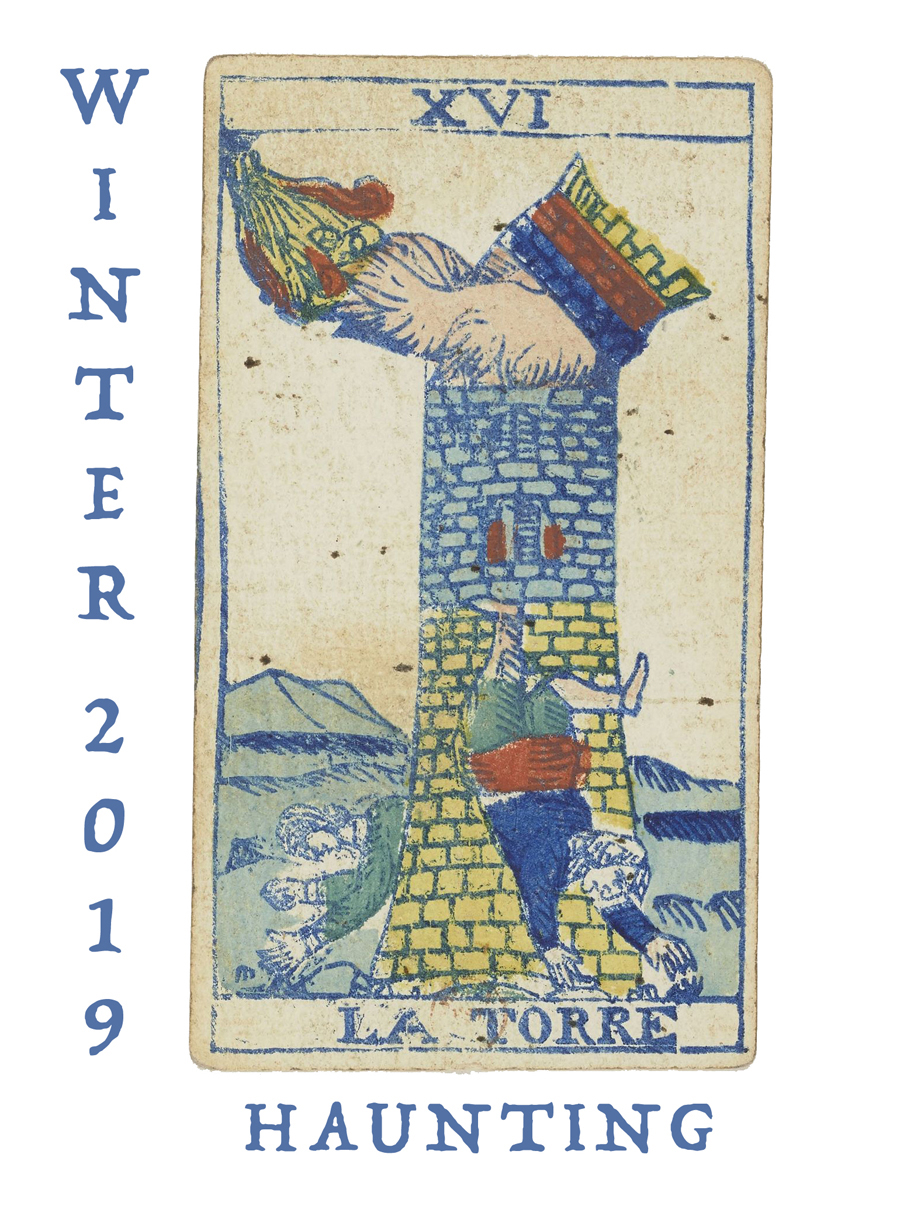In the 1980s, a British engineer named Vic Tandy discovered that an infrasound frequency at about 19 Hz could be blamed for at least some of our ghost stories; it can create a sense of unease, can make eyes resonate just enough for fear to slip into periphery. It can make one shiver, as if brushed lightly by a hand; can make us feel not-alone. All along, Tandy thought, it was only this: a low hum, a soundless sound, nothing scary, an easy fix. If only it was that simple.
Despite its limitations, there is at least a portion of Tandy’s theory that is confirmed by the writers in this issue: Most of what haunts us is real. Perhaps this is reflective of our current moment. Or perhaps it’s how it’s always been: we’ve always felt something else in the room, like a signal in the air.
Here, we’re haunted by wasps, by loss, by memory. We are haunted by seasons–by what’s happened, and what never will. We are haunted by flight and staying put, by bodies in movement and bodies in bondage. We are haunted by figures in frames, women in windows, feathers in boxes. We are haunted by what we would do if given the chance. And by what we’ve already done.
What also seems true though, shuffling through this lineup of ghosts, is that being haunted, to some degree, is also to be comforted; tended to; attended. Someone is always watching over you–watching while you sleep. These writers and their words remind us that haunting is a kind of company kept; that we are haunted together, and always have been, through any manner of frightening times. Thank you, writers, for reminding us we’re never alone.
This issue is also the product of an editorial community of writers and readers who brought their own fears and phobias to the selection process, and who at each step demonstrated and embodied another certain truth: inherent in any good haunting is a deep sense of reverence, astonishment, and awe. Thank you, team, for your daring.
We’re presenting this web edition as standard text, as well as our first ever audio IssueCast. We encourage you, reader, to explore the dark halls of both. We hope—indeed, expect—you will be haunted just as we have. In a time when so many are quieted and silenced—so many feeling like wraiths–we hope to share these haunted voices with you. Thank you for listening. Thanks for the company.
—MH
Contents
Mood, Stooges, Food – Kara Vernor (fiction)
Oolong – Aiden Baker (fiction)
The Blue Hour – Robert Fillman (poetry)
When my grandmother begins to forget – Natalie Wee (poetry)
Remembrance – Rhonda McDonnell (poetry)
The Veil – Darci Schummer (fiction)
The Excess Stages of Grief – Colin Pope (poetry)
How to Tattoo a Disordered Woman – Beth Gilstrap (creative nonfiction)
Praxinoscope – Kevin Hyde (fiction)
Find an Answer in Floorboards or Flowers – E. Kristin Anderson (poetry)
That Same Summer – Lauren W. Westerfield (creative nonfiction)
Gold Dredge – Ted Mathys (poetry)
Capable – Kerry Donoghue (poetry)
Penumbra – Jessica Lynn Suchon (poetry)
Backwash of the Dead – Collin Callahan (poetry)
Skylab & Feather: Reflections on Skylab Falling, and a Long-Dead Father – Cheyenne Nimes (creative nonfiction)
Editor
Michael Hurley
Editorial Assistants
Nia Ali-Valentine, Brooke Beckmann,
Samantha Blanc, Jillian Borukhovich,
Bailey Cochran, Albert Giedrojt,
Julia Greuel, Kelda Habing,
Maria Henriquez, Angel Heredia,
Jack Johnston, Nicholas Kartsunes,
Michael Mazurkiewicz, Nicolas Palma,
Autumn Schraufnagel, Kailee Spaniol,
Andrew Szelina, Holly Zylo
